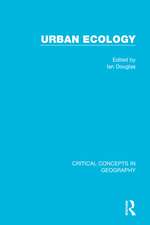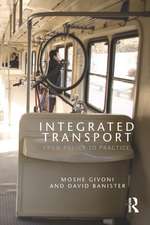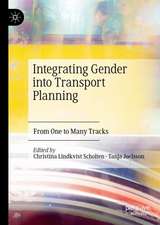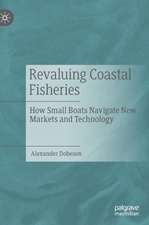What Do Design Reviewers Really Do? Understanding Roles Played by Design Reviewers in Daily Practice
Autor Joongsub Kimen Limba Engleză Hardback – 12 ian 2019
Preț: 642.03 lei
Preț vechi: 755.33 lei
-15% Nou
Puncte Express: 963
Preț estimativ în valută:
122.85€ • 128.02$ • 101.72£
122.85€ • 128.02$ • 101.72£
Carte tipărită la comandă
Livrare economică 03-17 aprilie
Preluare comenzi: 021 569.72.76
Specificații
ISBN-13: 9783030056414
ISBN-10: 3030056414
Pagini: 317
Ilustrații: XI, 190 p. 5 illus.
Dimensiuni: 155 x 235 x 15 mm
Greutate: 0.46 kg
Ediția:1st ed. 2019
Editura: Springer International Publishing
Colecția Springer
Locul publicării:Cham, Switzerland
ISBN-10: 3030056414
Pagini: 317
Ilustrații: XI, 190 p. 5 illus.
Dimensiuni: 155 x 235 x 15 mm
Greutate: 0.46 kg
Ediția:1st ed. 2019
Editura: Springer International Publishing
Colecția Springer
Locul publicării:Cham, Switzerland
Cuprins
Chapter 1. Introduction.- Chapter 2. Overview of Current Status in Design Review.- Chapter 3. Research Method.- Chapter 4. Interview Results: The Design Reviewer as Educator.- Chapter 5. Interview Results: The Design Reviewer as Facilitator.- Chapter 6. Interview Results: The Design Reviewer as Therapist.- Chapter 7. Interview Results: The Design Reviewer as Convener.- Chapter 8. Survey Results.- Chapter 9. Lessons Learned from the Study, Implications of Design Review, and Conclusion.- References.- References for Figures.- Appendix 1: Interview questions.- Appendix 2: Survey Questionnaire.
Notă biografică
Joongsub Kim, PhD, RA, AIA, AICP, Professor at Lawrence Technological University, directs its Detroit Studio (an off-campus, community-based design center) and the Master of Urban Design Program. Dr. Kim, a graduate of MIT and the University of Michigan, focuses on public interest design, and he has received numerous honors and grants, including an ACSA/AIAS New Faculty Teaching Award, a Boston Society of Architects National Research Grant, an ACSA Collaborative Practice Award Citation, a Graham Foundation Advanced Studies Grant, an NCARB Integration of Practice and Education National Grant, an AIA Michigan President’s Award, a National Endowment for the Arts Grant, a Kellogg Foundation Grant, and a Knight Foundation Arts Challenge Grant. He has written chapters for several books published by Routeledge, Brill, and Stylus. In addition, his work has been published in IN_BO (Italy), Urban Design International, Journal of Urban Design, Places, Environment & Behavior, Open House International (England), Architectural Research Centers Consortium Journal, Architectural Record, and Architect.
Textul de pe ultima copertă
This book provides an original contribution to the planning and design literature. Not only does it provide a fresh and finely grained examination of the daily challenges and opportunities of design review practice, but it does so in an ethnographically compelling way—through extensive references that convey and show what a distanced researcher could never adequately summarize and paraphrase. Architects, urban designers, and developers will learn about how they might work with design reviewers on the basis of the four significant roles that a design review staff plays frequently in the design review process. Faculty and students in architecture, urban design, and urban planning will learn about design governance, design regulations, design culture, participants, processes, and micropolitics in design and design reviews. There are possibly tens of thousands of design review boards in the United States that review proposals for building designs and site designs submitted by practitioners in architecture, landscape architecture, urban design, urban planning, and urban development. Given this considerable professional context, the target audience of this book includes design reviewers, practitioners, scholars, educators, and students in the fields of architecture, urban design, landscape architecture, urban planning, and urban development.
Caracteristici
The first book to cover several practical roles that design reviewers often play to make the review process successful The only book dealing with design reviewers’ potential impact on design review, design practice, the built environment, and public policies Helpful chapters on how to better prepare and educate the architects and planners of the next generation


























